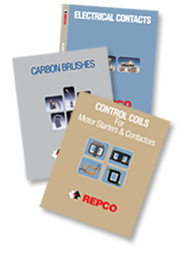Frozen pipes not only mean the inconvenient lack of water, they also can burst causing expensive repair problems. Homeowners are often understandably frantic to get water pipes running again. But thawing the pipes improperly can lead to more problems.
Never use a device with a flame to thaw out pipes. A little heat on the right pipe could get that water flowing, but an open flame on a pipe is a bad idea. According to fire experts, flames under the house, even when directed at pipes, are a common cause of fire. The open flame from a heater can ignite insulation or flooring materials under a house. Worse, pipes can heat up dramatically from flaming devices, with heat traveling along the piping systems inside walls. This heat can ignite wall materials, which can smolder for hours before being discovered, or bursting into flame. Alternatively, excessive heat on metal piping can cause water to boil, causing the pipe to burst, according to the Red Cross. If you know where the pipes are frozen, first open the faucets and then apply heat with a hair dryer or electric heating pad.
Prepare ahead for very cold temperatures. If you know your pipes are prone to freezing, give yourself a good supply of water by partially filling a clean bathtub. This can provide water for pets, cleaning, or bathing. It will also give you some breathing room so you can take your time unfreezing the pipes. Next, keep the faucets open to a drip. This will help prevent pipes from freezing. Although this can put a strain on water pump systems, it is usually better than broken pipe disasters. Close garage doors, especially if there are pipes along the garage walls. Open your cabinet doors in the kitchen and bathroom to allow warm room air to circulate in tight spaces. Don't turn down the house temperature during very cold nights. Never set the thermostat to less than 55 degrees when the weather will be below zero.
One of the best ways to prevent frozen pipes is with heat tape or heat cable. These low-heat products usually can be plugged in at the beginning of the season and left on until spring. This is especially good for pipes that run along outside walls. Be sure to unhook outdoor hoses and close valves supplying outdoor faucets. Completely drain and blowout an irrigation system. If the problem with frozen pipes persists every winter season, consider moving exposed piping. Although this is a major project, it should prevent future freezing problems. Insulation in attics, basements and crawl spaces will help prevent frozen pipes.

- Electrical Contacts
Electrical Contacts
- Carbon Brushes
Carbon Brushes : Brush Reference
- Control Coils
Control Coils
- Other Contactor Parts
- More
- Search
- Auxiliary Contacts
Auxiliary Contacts
- Shunts
Shunts
- Springs
Springs
- AC Contactors & Starters
AC Contactors & Starters
- DC Contactors
DC Contactors
- Fuses
Article 2 (Dec 2017): Tips for preventing pipes from freezing & thawing frozen pipes
December 19, 2017
« Return To Articles
Quick Contact
Newsletter Signup
Join our email list and we will keep you informed of sales and promotions and other great deals!
Email SubscribeRequest Literature
Request our Electrical Contact, Carbon Brush, or Control Coil catalogs (via Mail).
Request NowLiterature Request Or Download
Request our Electrical Contact, Carbon Brush, or Control Coil catalogs. Or download PDFs or browse them online.
Choose

Repco
100 Sonwil Drive
Buffalo NY 14225 - Carbon Brushes